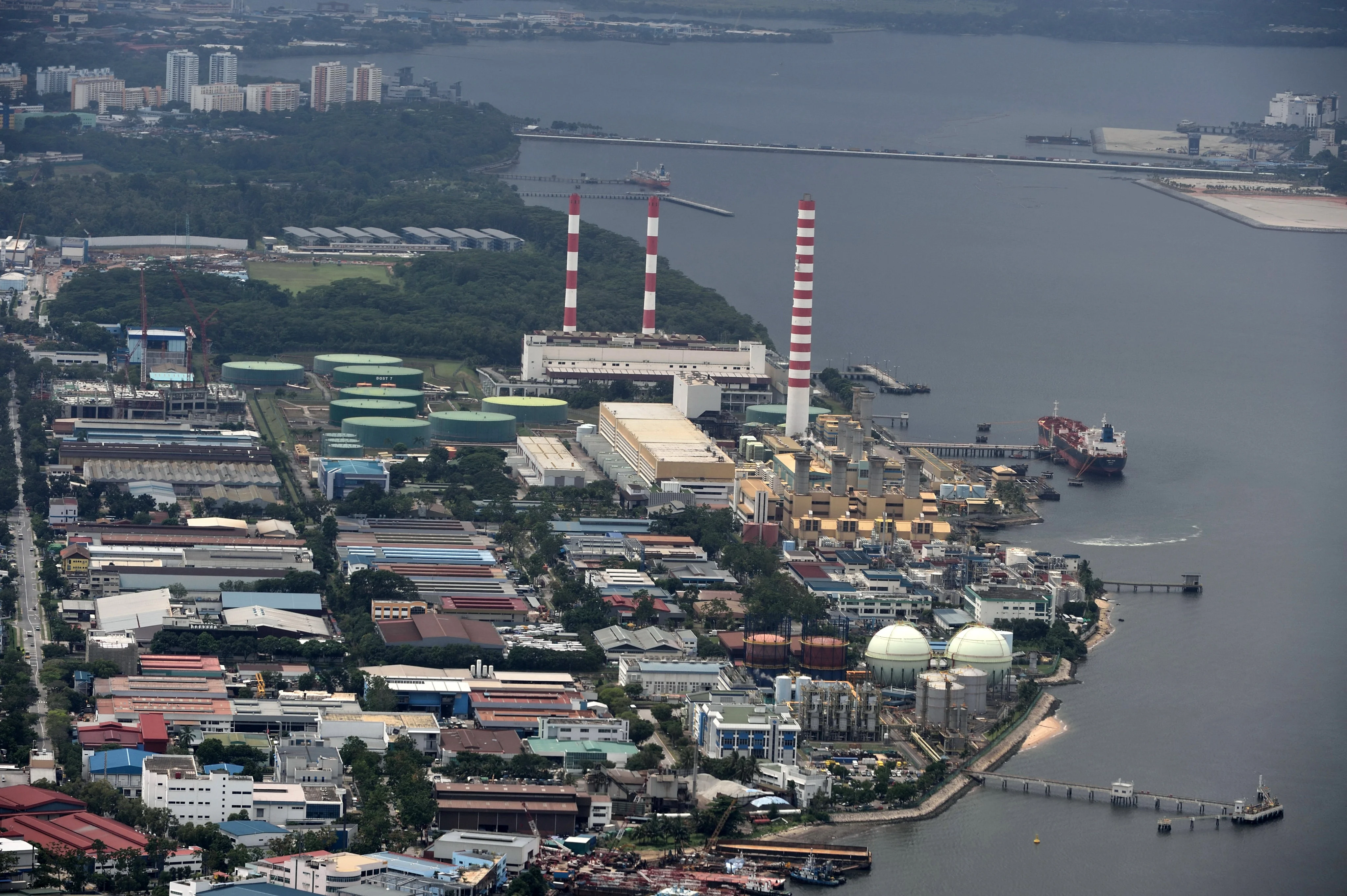Copyright scmp

Land-scarce Singapore officially remains non-committal about building a nuclear reactor, but experts say all signs point to the city state turning to atomic energy to meet its net-zero goals by 2050. The discourse around civilian nuclear energy has picked up in recent years, with Singapore studying its deployment, developing expertise and partnering with established companies and nuclear nations such as the United States and France to prepare for a possible shift. The government, however, maintains that it is still weighing its options and says no final decision on nuclear has been made. In his budget speech in February, Prime Minister Lawrence Wong pledged an additional S$5 billion (US$3.85 billion) for Singapore’s Future Energy Fund to develop clean energy infrastructure “be it in electricity imports, hydrogen or nuclear”. Asked whether the compact, 735 sq km (284 square-mile) nation should harness nuclear energy to meet its climate goals, Alvin Chew, a senior fellow at the S. Rajaratnam School of International Studies who researches civilian nuclear energy, was unequivocal. “Absolutely. The only type of renewable that is viable in Singapore is solar power,” Chew said. “However, solar power incurs a very large footprint, and with its small land area, it is estimated that solar power can only form about 10 per cent of its future electricity mix. Nuclear energy, due to its high energy density, is the only clean form of energy that is suitable for a small country.” In July, Rafael Grossi, director general of the International Atomic Energy Agency (IAEA), called Singapore “the most perfect example of a country that needs nuclear energy”. “With a very small nuclear power plant, you can have a level of energy density and production that you cannot match with anything else,” he said, predicting that Singapore could have its first reactor “within a few years” – potentially through cooperation with its Asean neighbours. Public unease remains a concern, however. Chew said one of Singapore’s biggest challenges would not be technical but psychological: convincing citizens adequate emergency systems exist to handle a nuclear incident. “Regardless of how technology has evolved, no engineering system can claim to be risk-free, and therefore it is still necessary to prepare the public on how to respond to an emergency.” Victor Nian, co-founder of the Centre for Strategic Energy and Resources think tank, voiced similar reservations. “Public acceptance and confidence are important in supporting any successful nuclear power programme,” he told This Week in Asia. “[They] require sustained public engagement, education and a clear demonstration of how modern nuclear technologies differ from those of the past.” To reassure citizens, the city state on Monday released a government background paper outlining its nuclear capability development efforts, coinciding with the launch of Singapore International Energy Week. The report emphasised that nuclear power has historically resulted in lower death and accident rates than many other energy sources. Still, it acknowledged that disasters such as Chernobyl and Fukushima had “created a worry that nuclear technology is unsafe”. Modern reactor designs, such as next-generation small modular reactors (SMRs), have adopted stricter regulations and lessons from past catastrophes, significantly cutting accident risks. SMRs use passive cooling mechanisms driven by gravity and air circulation rather than external power or human-operated pumps, potentially making them more resilient in emergencies, according to the paper. Designed for scalability, SMRs have a smaller output, which simplifies safety systems. The Rolls-Royce SMR currently being built in the UK, for instance, will fit within an area the size of three football pitches while producing 470 megawatts of low-carbon energy, comparable to more than 150 onshore wind turbines. Yet Nian urged careful adoption of the new technology. “It is generally advisable to observe the deployment and performance of second- or third-of-a-kind projects before committing to deployment to prioritise public safety,” he said. “Achieving readiness for such adoption also requires sustained investment in upskilling the workforce to ensure the availability of qualified professionals capable of supporting safe and effective implementation.” Singapore’s National Environment Agency has already linked up with regulators from France, Finland and the United States, and has consulted the Swedish Nuclear Fuel and Waste Management Company on best practices for the safe handling of radioactive and nuclear waste. Which reactor? Of the 70-plus SMR designs under development, only two are operational today: Russia’s Akademik Lomonosov, the world’s first floating nuclear power plant, which began generating power from twin 35MW SMRs in 2020; and the Chinese state-owned Huaneng Group’s 200MW SMR at Shidao Bay, which started feeding electricity into Shandong province’s grid last December. Neither reactor is available commercially. While China’s Shidao Bay deployment represented a technological leap, the country’s global reach remains limited – with only six overseas nuclear projects – compared with Russia’s Rosatom, which has built 20 reactors abroad as of October, according to a recent report from strategic advisory firm The Asia Group. That report also noted a surge of nuclear interest across the Association of Southeast Asian Nations over the past two years as regional energy demand soars. Jennifer Schuch-Page, the firm’s managing principal, told This Week in Asia that while nuclear power features in several Asean members’ energy transition plans, challenges run the gamut from licensing and financing to supply chains, waste management and liability. Still, “public opinions on nuclear seem to be changing in the region,” she said. “Seeing advanced nuclear projects develop elsewhere in the world is likely to strengthen public confidence.” After scrapping its nuclear plans in 2016 over safety and cost concerns, Vietnam revived its Ninh Thuan project last December. On the sidelines of last weekend’s Asean summit in Kuala Lumpur, Prime Minister Pham Minh Chinh and Russian Deputy Prime Minister Alexey Overchuk agreed to accelerate nuclear cooperation, with Vietnam aiming to operate its first plant by early 2030. Indonesia has begun regulatory reviews, while Malaysia has engaged the IAEA on capacity building and, in July, launched negotiations with the US for a civil nuclear cooperation framework known as a “123 Agreement”. Singapore signed its own 123 Agreement with Washington last year. In September, the US added both Singapore and the Philippines to its list of countries authorised to recieve nuclear technology exports, a key step towards future commercial collaboration. On Monday, Singapore’s Energy Market Authority signed new deals with the Idaho National Laboratory and Battelle Memorial Institute, two American nuclear research organisations, to strengthen its technical capabilities. This Week in Asia has contacted the authority for comment on whether geopolitical factors affect Singapore’s partnership choices. If Singapore does move ahead, it would do so as a newcomer outside the Nuclear Suppliers Group export control regime, meaning it must work with supplier nations to ensure compliance with international safety, security and safeguards standards. Chew estimated that, based on the IAEA’s milestone framework, building a reactor could take between 10 and 15 years. Only a handful of countries export commercial nuclear reactors. These include China, the US, France and Russia. In September, Foreign Minister Vivian Balakrishnan cautioned against a binary mindset that Singapore must choose between Washington and Beijing for advanced technology. “We are a technocratic and technophilic system,” he said. “I don’t care where it [the technology] comes from, but we will do business honestly, and we will not play games, and we will live up to our word.” Nian agreed, describing Singapore’s approach as “technology and vendor-neutral” – focused on what works best rather than allegiance. Chew added that political support would also be needed, pointing to how the US had backed Japan’s controversial release of treated Fukushima waste water as an example of diplomatic weight shaping outcomes. Ultimately, experts say Singapore’s nuclear future, if it arrives, will go far beyond the reactor itself. It will depend on mastering an ecosystem of expertise, fuel supply, regulatory rigour and waste management. “Singapore is likely to adopt a strategy to learn from the best practices in the US, China and other leading nuclear states, while developing a programme that would work in Singapore’s context,” Nian said.



